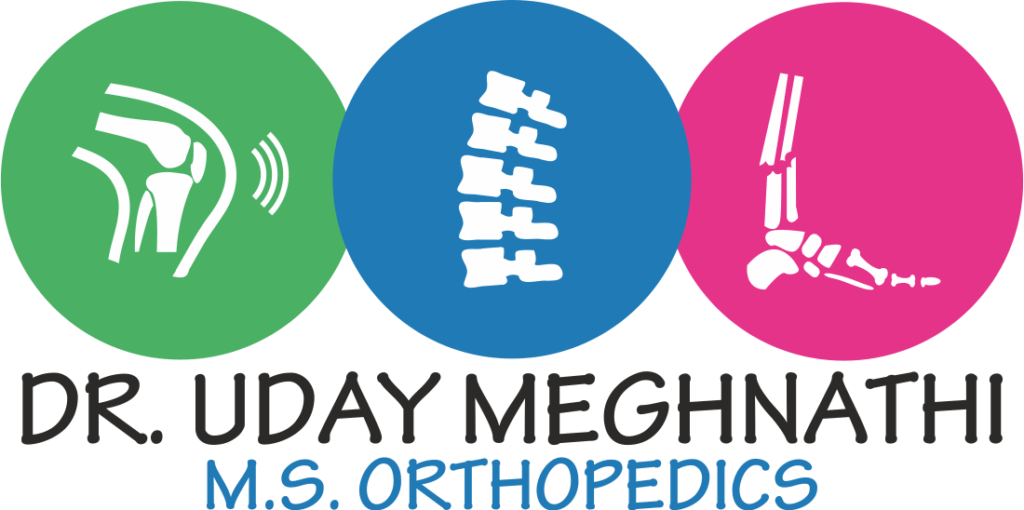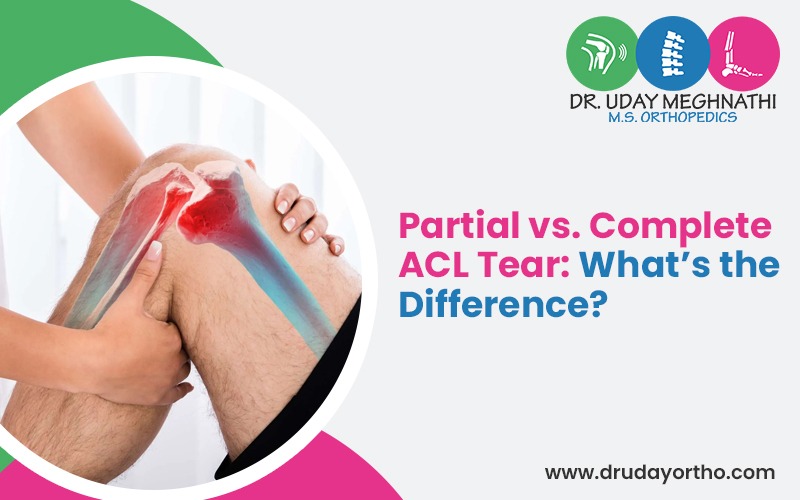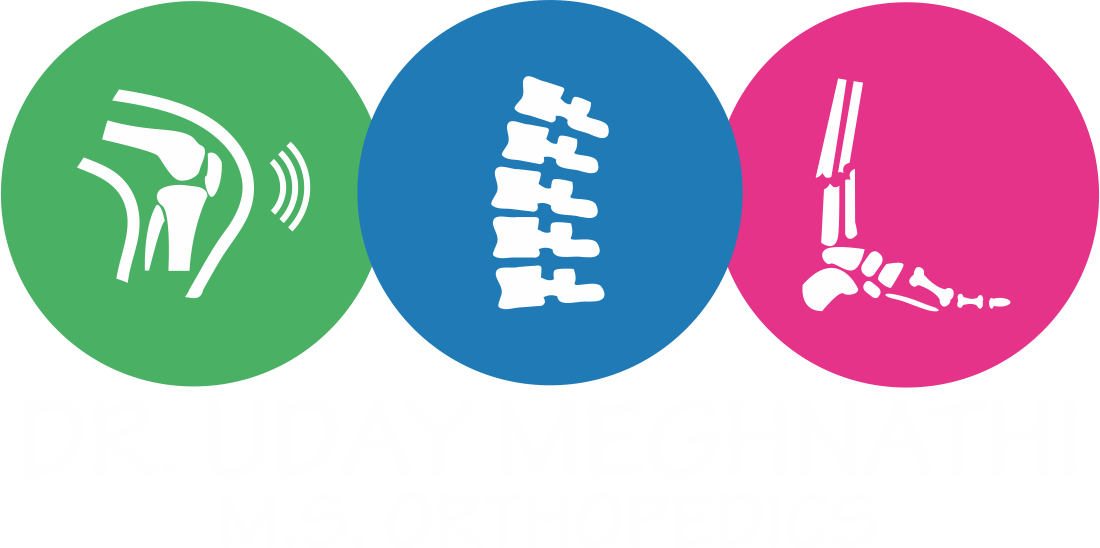Heard a snap sound after a fall, followed by redness and swelling around the knee? That might be an ACL tear right there. The ACL is located in the very center of the knee and is responsible for maintaining its stability and functionality. ACL tears are a common injury among athletes. But occasionally, the ligament has tiny microscopic damage along with subtle pain and swelling. We will attempt to distinguish between a partial and a complete ACL tear in this blog.
What is an ACL Tear?
The anterior cruciate ligament (ACL) is one of the four major ligaments of the knee joint. When it undergoes partial or complete tearing due to harsh impact (for example, while playing sports), it is medically known as an ACL tear. Most of the tears are complete, as the ligament is present at the center of the knee. For such cases, visit Dr. Uday Meghnathi, currently the best knee specialist in Vadodara. He has rich experience in treating severe cases of ACL and knee-related impairments. His treatment facility is completely equipped with advanced technologies and trained staff. He is very mindful of his patients and ensures each one gets the best treatment. Call us to book an appointment with him.
Also Check: Patellar Tendinitis: The Jumper’s Knee Explained
Partial Vs Complete ACL Tear
In a partial ACL tear, only a few of the fibers are impacted, while most of them remain intact. In a complete ACL tear, all the fibers are torn severely. Such injury occurs when a person at high velocity, suddenly stops and changes direction. Also, when landing from a jump at a high speed. An ACL tear is accompanied by meniscus injuries, cartilage, and other knee tissues. A few additional differences between them are listed in tabular form below.
Aspect Partial ACL Tear Complete ACL Tear
Definition Only some fibers of the ACL are torn Entire ACL is torn or ruptured
Severity Mild to moderate Severe
Knee Stability Slight looseness Significant instability
Pain Level Mild to moderate Severe initially
Swelling Minimal or delayed Rapid and pronounced
Mobility Some motion preserved Motion limited
MRI Findings Partial fiber disruption Complete ligament discontinuity
Treatment Options for ACL Tear
#1 Non-Surgical Treatment: There are several ways to treat ACL tears with the help of bracing, R.I.C.E. treatment, and anti-inflammatory medications. Knee braces are very efficient in providing support to the knee using their straps and soft cushions. Physical therapy focuses on building strength in the surrounding muscles, such as the quadriceps and hamstrings. It helps in restoring knee stability and range during activity. At last, the NSAIDs help in reducing pain and swelling.
#2 Surgical Treatment: The ACL reconstruction surgery is performed in case of complete deterioration of the tissues. The torn ligament is replaced with a graft. It is just a minimally invasive arthroscopic surgery. However, it requires 6-9 months to recover and regain flexibility and balance.
Conclusion
Surgery is usually required for complete tears or high-demand activities, but non-surgical methods like bracing and physical therapy can be helpful for partial tears. Personalized treatment and rehabilitation are necessary for successful and long-term knee stability. For complete assistance and treatment, visit Dr Uday Meghnathi. He is the orthopedic surgeon in Vadodara, offering a wide range of services for all musculoskeletal issues, such as fracture management, joint replacement, arthritis, pediatric orthopedics, and many more. His clinic is fully equipped with all advanced amenities and expert staff. Discuss your concerns with us. Call to book an appointment.
Also Read: 4 Ways a Knee Brace Can Help Knee Arthritis


